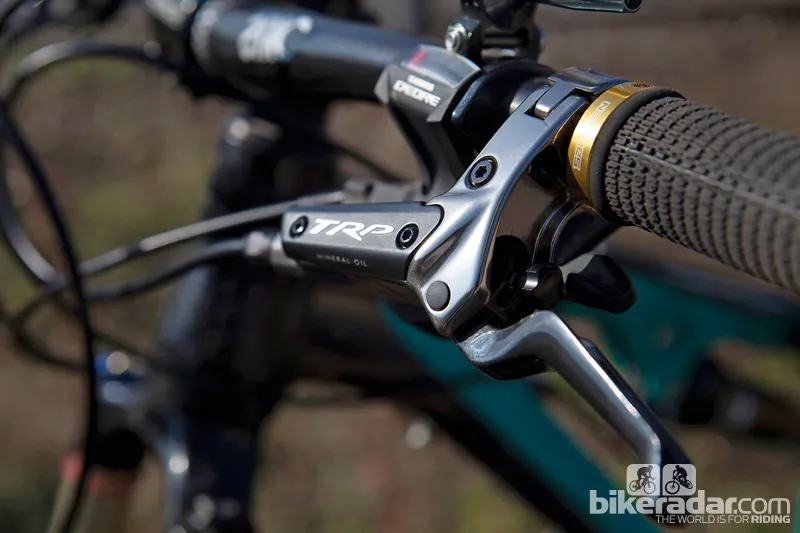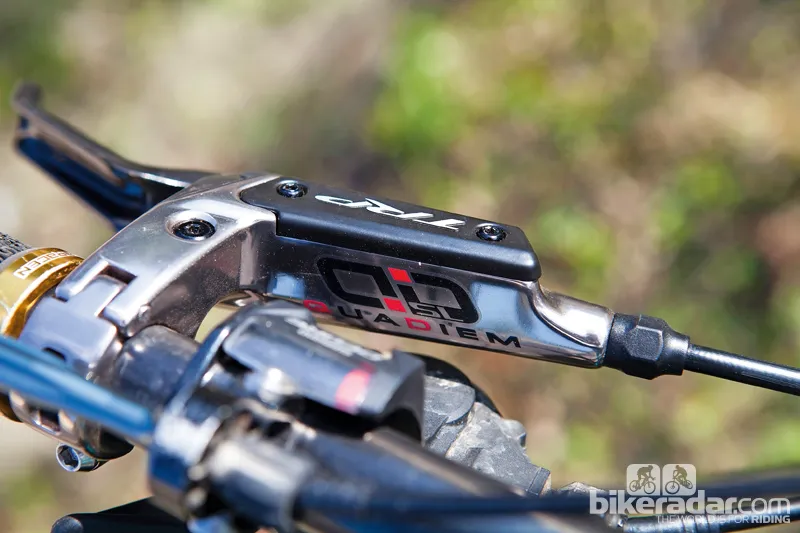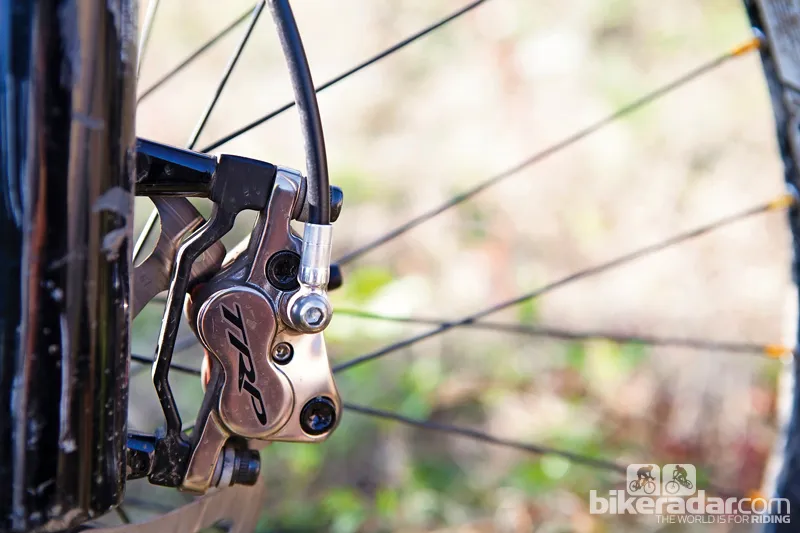After a false start last year, TRP’s four-piston Quadiem brake is now available to buy in both basic and SL formats.
The SL version saves 100g over the basic Quadiem thanks to some hardware changes – including a broad-bladed carbon fibre lever – and a complete 180mm front setup comes in at 474g. That’s still 110g more than SRAM’s four-piston Trail X0 system, which remains the benchmark for trail brakes, but is in line with full-on downhill-focused brakes such as Avid’s Code.
While the hinged clamp makes installation easy and sits fine alongside trigger shifters, there are no combination-clamp options. Production versions will come with an alloy-centred, two-piece rotor designed to reduce heat build-up, but there are no finned pads or clever composite rotors to complement them a la Shimano.
The big calliper is totally enclosed on top, so TRP rely on composite pistons to deal with the heat that's built-up during long descents. It certainly cools well enough to prevent fade in the UK, despite our deliberate anchor-dragging provocations, though we’re yet to confirm they’re as happy in true alpine conditions.
Power from the reworked lever internals, big, four-piston callipers and long pads is improved, and is now right up there with most heavy-duty stoppers. It’s not quite as brutal as Shimano’s Saint or Formula’s RO, but squeeze hard and the Quadiems deliver proper tyre-ripping power.
The way that power is delivered takes some getting used to. A gentle squeeze produces a very subtle start that ramps up quickly to full bite. This creates impressive modulation on smoother trails or tarmac, but grabbing at them suddenly – either deliberately or accidentally when thumping across braking bumps – delivers a mallet of momentum loss that’s hard to control or predict. You have to spend quite a lot of time with these brakes before you overcome this.
You have to keep re-compensating for a long time too, as the power keeps increasing for ages thanks to a very long bedding-in process. There’s no bite point adjust either, just a reach adjust in the crook of the lever.
Disappointingly for a brake that’s designed to live on downhill and hardcore bikes that are going to get crashed more than most, the hose is situated in a very exposed spot on the outside edge of the calliper. The semi-sintered pad design is unique to the brake rather than shared with a more commonly available brand, and pricing is very high too.



